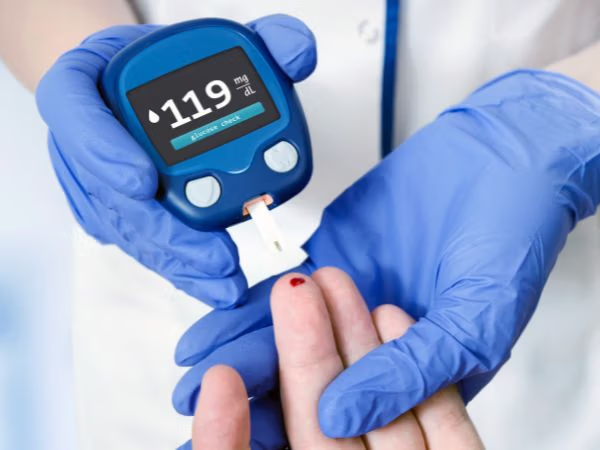This World Diabetes Day, the UAE faces a worrying health alarm: diabetes cases have surged by up to 25%, with obesity fueling nearly two-thirds of the rise. Dr. Lal David, Medical Director at New Apollo Polyclinic in Dubai, warns that the modern lifestyle, sedentary habits, fast food, and rising obesity are pushing more residents and expats into the grip of this silent epidemic. It’s a wake-up call that goes beyond statistics, urging everyone to rethink diet, activity, and overall well-being.
“Diabetes, as such, has risen in the Middle East, you can say. In the GCC, if you see, there is around a 21% rise in diabetes compared to last year, and it’s more. And in the UAE itself, if you say there are around 25% of diabetes cases. In that, the obesity diabetes rate is around 15%,” Dr. Lal David told Finance 360.
Women & Inactivity: A Major Factor
Mostly, Dr. Lal feels the cases are more in females than males. “The main reason is inactivity and lack of physical exercise in females. That’s why females have more obesity than males.”
He adds that expats are also at risk, as their diet changes after moving to the UAE. “It’s very commonly seen in expats because when they are in India, they have a different diet pattern. When they come here, they acquire a different schedule, especially fast foods, and Coke. Obesity causes insulin resistance, indirectly, diabetes is developed.”
Diabetes In Children & Adolescents
Children are not spared either. “Children’s adolescent diabetes is also on the rise due to poor habits and lack of exercise. They spend most of their time sitting and studying, with little to no physical activity. Many stay indoors, often playing video games or using computers, and the climate further limits outdoor activities for everyone. This is a factor contributing to obesity.”
Understanding Ozempic & Other GLP-1 Medications
With the rising popularity of medications like Ozempic, there’s also confusion.
Dr. Lal explains, “There are two injections available in the market now: Mounjaro and Ozempic. Mounjaro has both GLP-1 and GIP action – it acts on both centers, making it a GLP-1 and GIP agonist. Ozempic, on the other hand, is only GLP-1 and is intended solely for diabetic patients. In Ozempic, the dosing starts at 0.25 mg for the first month, then increases to 0.5 mg, and finally to 1 mg over a three-month period. For obese patients, Wegovy is used, with doses starting at 0.25 mg, then 0.5 mg, 1 mg, 1.7 mg, and finally 2.4 mg.”
“This is a medication that must be continued consistently; once you start it, it should be maintained lifelong and should not be stopped. If you stop it, the weight gained may return, because GLP-1 works by delaying gastric emptying, making you feel full and reducing your appetite. When the medication is stopped, appetite returns, and weight can come back. People often think they can take 2–3 doses and then stop, but it is not a short-term solution; it is a long-term therapy,” Dr. David adds.
“This is something many people don’t understand, and they tend to follow trends due to the influence of social media, without knowing the full facts,” he explains in detail.
Furthermore, he also cautions about purchasing medications without medical guidance: “People should see a doctor before starting the medication. That is very, very important. They should follow the doctor’s guidelines and not go directly to the pharmacy, as many people are obtaining it from India. Medications in the UAE generally cost around 1,700 AED, whereas in India, they are about Rs 18,000. Therefore, people should have a proper discussion with their doctor about the side effects and fully understand the medication before taking it. Ozempic is for diabetes, and Wegovy is for obesity. There are two other products: Wegovy is a higher dose of Ozempic and is for obesity, while Ozempic is for diabetes. Mounjaro is used for both diabetes and obesity.”
Young Adults at Risk: Lifestyle & Diet
Regarding young adults aged 23–30, Dr. Lal notes the troubles of modern lifestyle, “You should always try to restrict your carbohydrates, as they are a major factor. Also, avoid fizzy or aerated drinks. Carbohydrates are especially important to monitor. As for French fries, they are high in calories and should be consumed sparingly.”
He emphasizes the importance of regular health checks: “The incidence of cardiac disease is now mainly between ages 20 to 50, and they say 49 is a particularly dangerous age for heart disease. Most of these people’s sugar levels and other health markers are not controlled.”
Dr. Lal stresses that maintaining a balanced life is essential to managing diabetes, rather than relying solely on information seen on social media. As cases continue to rise, it becomes increasingly important to take utmost care of one’s health through proper diet, regular exercise, and medical guidance, rather than following trends or shortcuts.






